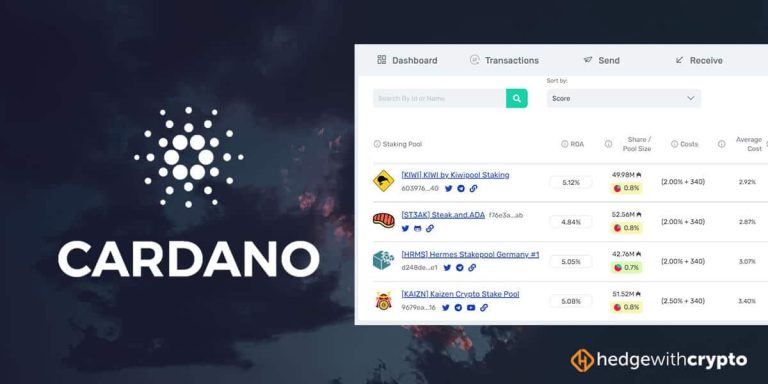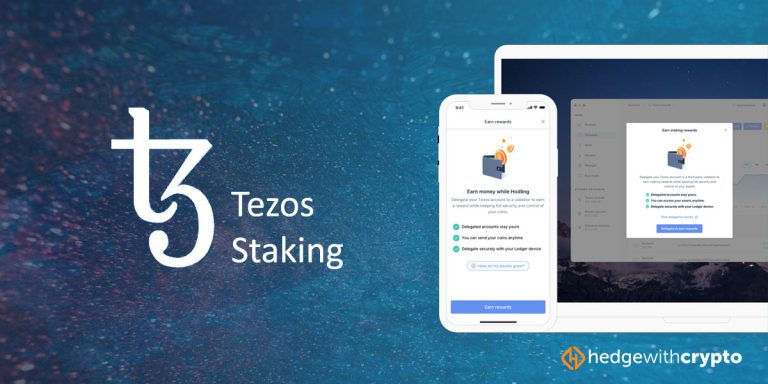We may earn a commission from links on our site, but this doesn’t affect our reviews. Learn more.
Hedge With Crypto is an independent publisher that provides objective and free content. Articles on our site may include links to our partners. If you click on these links, we may earn a commission. However, our editorial content remains unbiased, reflecting our own opinions or the general information available. For more information on our company policies, read the Affiliate Disclosure, Privacy Policy, and Terms & Conditions.
This Is How You Can Stake Cryptocurrency To Earn Rewards
Learn about staking cryptocurrency, what it is, why you should consider staking, and its pros and cons.
Hedge With Crypto aims to publish information that is factual and accurate as of the date of publication. For specific information about a cryptocurrency exchange or trading platform please visit that provider’s website. This information is general in nature and is for education purposes only. Hedge With Crypto does not provide financial advice nor does it take into account your personal financial situation. We encourage you to seek financial advice from an independent financial advisor where appropriate and make your own enquiries.
TABLE OF CONTENTS
Here's a quick guide on how you can begin staking your crypto:
- Compare staking platforms and wallets.
- Create an account and deposit tokens.
- Select a coin and begin staking.
How To Stake Cryptocurrency
1. Compare staking platforms and wallets
For individuals to begin staking crypto, one of the ways is to use the same exchange they purchased their assets with assuming it supports staking. They will be comfortable with the exchange’s design and likely already have performed due diligence on its features and other relevant criteria.
Cryptocurrency staking platforms will offer good staking rewards, no commissions or fees, and a wide selection of staking coins. For this guide, we will be using Kraken as an example. This is not intended to be a specific endorsement of Kraken, and it is important to look at an exchange’s unique features, fees, rewards rates, and available coins before deciding which platform to use.

2. Create an account and deposit tokens
The first step is to register an account with the chosen staking platform. Accounts can be opened for most exchanges via the homepage. For Kraken, navigate to the website and select “Get Started”. If an account is already registered and loaded with staking assets, skip to step 3.
Most platforms will require new customers to provide an email address and mobile number. Input any relevant data and verify the account by clicking any links provided via email or mobile.
The next step on the staking journey is to ensure the account is funded with relevant cryptocurrency. While some may already hold coins, not every exchange supports staking for every cryptocurrency. It is integral to double-check the exchange supports staking and which assets can be staked before making any financial decisions.
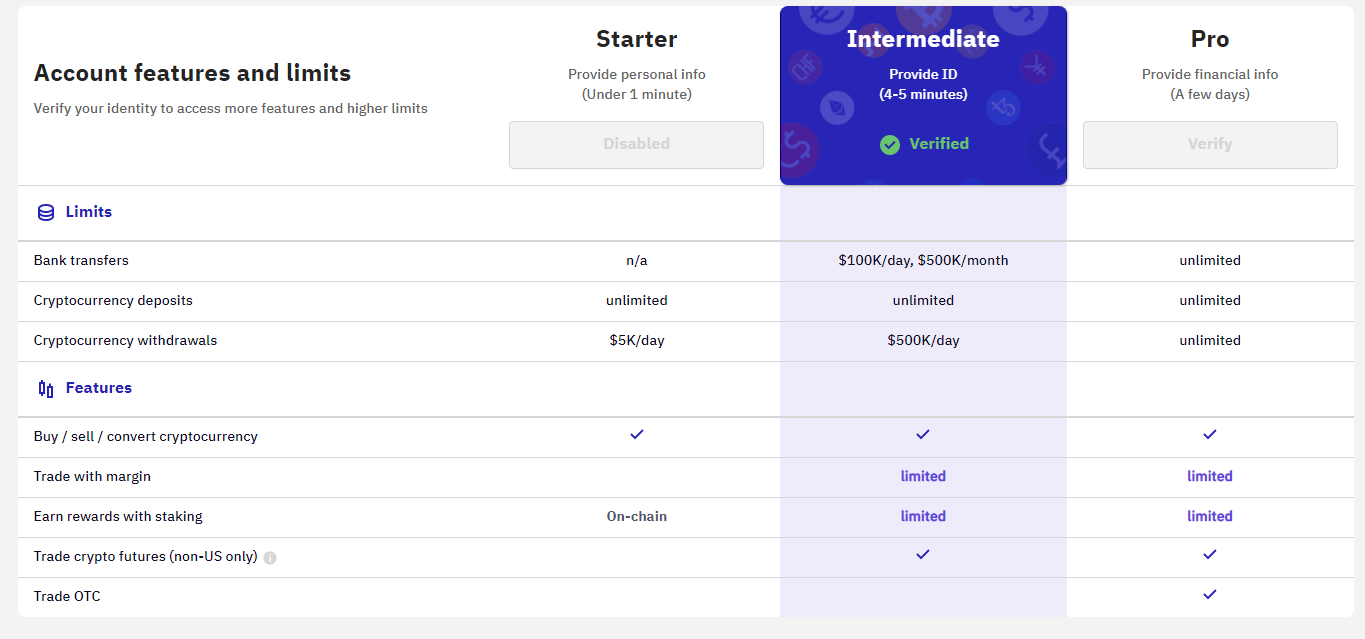
There are two main ways to fund a staking account: buy coins such as Ethereum or Solana with fiat currency or transfer an already-owned cryptocurrency to the exchange’s wallet.
Choose a supported deposit method (depending on region) to fund the account with a fiat currency like USD or EUR. Kraken and other popular exchanges also support “instant purchases” with debit/credit cards, allowing customers to purchase assets without transferring money from a bank account first.
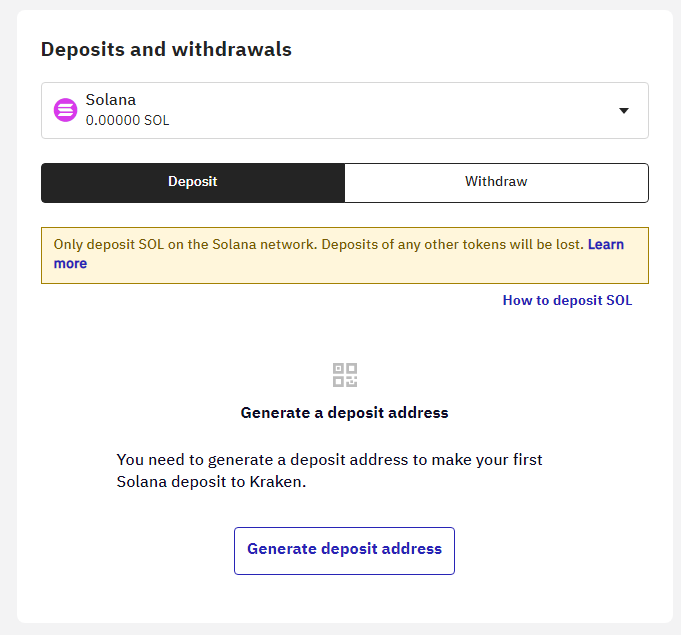
Select an asset that can be staked on the platform and then click “Buy/Sell”. Input the amount of cryptocurrency to purchase and confirm the transaction. The assets should hit the account within a few minutes. Alternatively, those who own crypto on a different exchange or in a non-custodial wallet can transfer their funds. This process can usually be completed within the exchange’s native multi-token wallet.
When using Kraken, navigate to the “Funding” tab to access the wallet. From here, select “Deposit” and choose the cryptocurrency to be transferred. Click on “Generate new address” to receive a unique address to receive the staking coin. Input this address into the third-party wallet and confirm the amount of crypto to be transferred.
3. Select a coin and begin staking
Now that the exchange account has crypto, it’s time to begin staking. Most platforms will have an “earnings hub” where the assets available for staking will be listed. Alternatively, some platforms will allow users to stake directly from their wallets by simply clicking “Stake/Earn” on held assets. Kraken users must navigate to the “Earn” tab to view the supported coins.
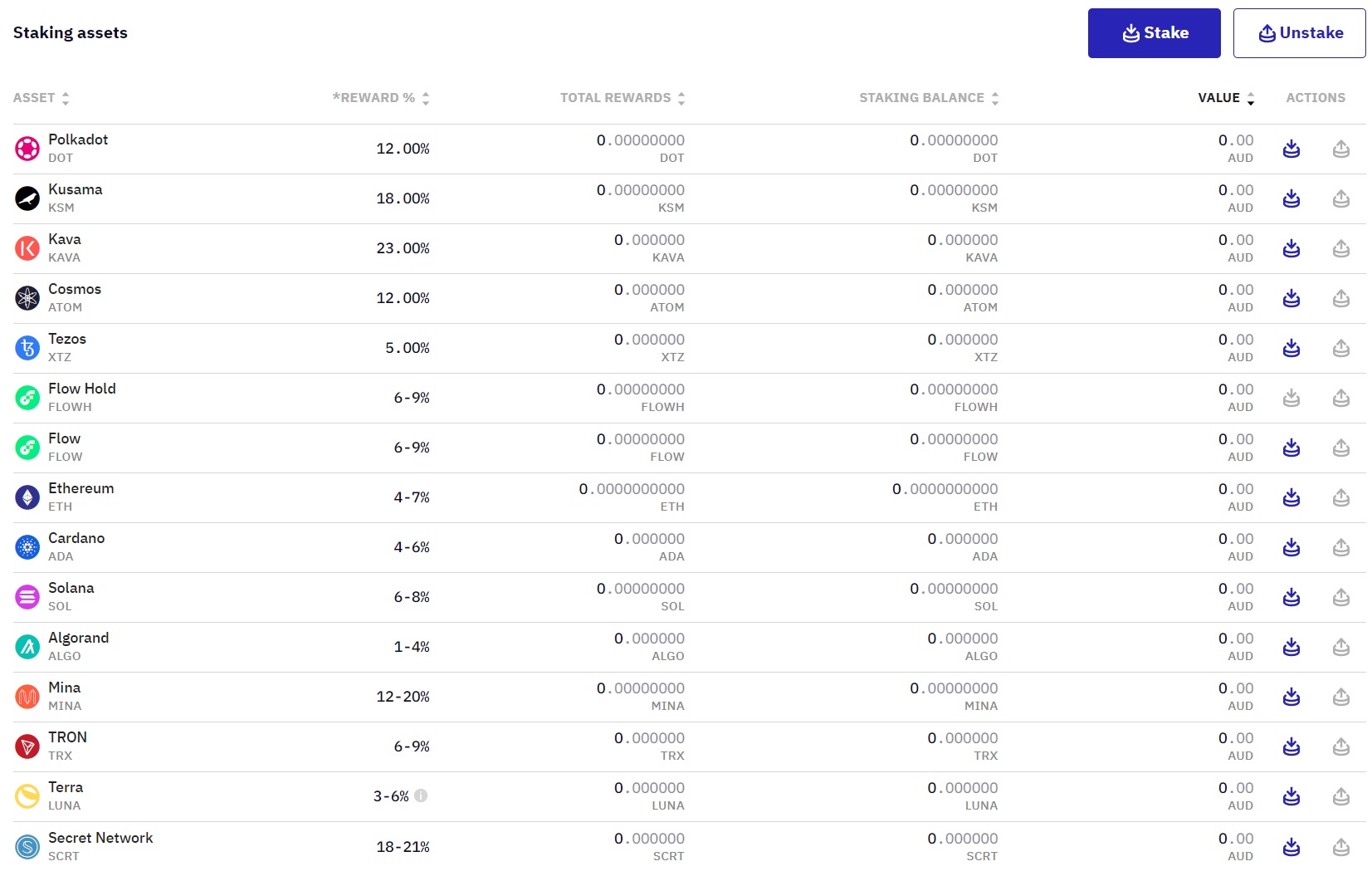
Select the “Stake” option to the right of the relevant asset underneath the “Actions” heading. For example, to stake Polkadot, find it in the asset list and then input the amount of DOT to be staked. This can be less than an entire asset holding, although certain currencies may have a minimum amount that can be staked.
Confirm the transaction, and that’s it! Within minutes, the cryptocurrency will be staked and passively earning income. The user can check the estimated reward percentage daily, including the rewards earned, balance, and total staking value on the platform.
Various Ways You Can Stake Crypto
There are many different ways to stake cryptocurrency. Users can stake via a wallet, directly on a decentralized app, through downloadable software, or via an exchange. Using a cryptocurrency exchange or staking platform is the most convenient and easiest staking method. These providers usually provide a direct fiat-to-crypto gateway, meaning users do not need to transfer their crypto to another platform to begin staking.
The pros and cons of each method are described below.
1. Cryptocurrency staking platform
Staking via a leading crypto exchange is likely the easiest option for crypto newcomers. It is the most convenient method, as many will already have accounts funded with coins that can be staked. It requires minimal technical know-how and is less risky of hacks or bugs than decentralized protocols. Exchanges tend to have low staking minimums and holding periods.
There are a couple of downsides to this method, though. Firstly, reward rates may be a little lower than alternatives, as the exchange is doing all the work on behalf of the user. Additionally, several exchanges act as validators or don’t let the customer choose an individual validator. Some people may prefer the flexibility of selecting a specific validator that fits their investment goals.
2. Decentralized exchange (DEX)
Users can choose to stake with a decentralized exchange like PancakeSwap. These protocols often have much higher reward rates than CEXs, and let their customers select an individual validator. Staking is often combined with liquidity provision for the best rewards, but requires a greater investment and can be confusing. Additionally, DEXs are unregulated, more susceptible to hacks and unprotected by insurance funds the way many centralized alternatives are.
3. Staking wallets
Staking with a wallet is a good alternative. It is a little more complex than staking via a crypto exchange, although some wallets are more intuitive. There are two additional steps to staking on a wallet that can make it a bit more overwhelming to newcomers. Firstly, the individual will need a solid grasp of transferring cryptocurrency. Additionally, they will be required to select a validator.

Choosing a validator can be a bit intimidating. If going down this route, ensure that the validator has never had any slashing offenses, has high uptime, low commission, and a high number of crypto already staked. Also, certain wallets are integrated with blockchains to allow direct staking. The advantage of directly staking on a network will vary, but it is generally a requirement for voting on relevant governance proposals. Examples of some of the best crypto wallets that support staking include Trustwallet, Exodus wallet, Guarda wallet, and Ledger Nano X.
Where To Stake Cryptocurrency
Staking cryptocurrency is a way to earn a passive yield on existing assets. A centralized staking platform or supported wallet is the most common method. Examples of the best-rated staking platforms based on Hedge With Crypto's reviews are listed below.
| EXCHANGE | CRYPTO ASSETS | TRADING FEES | RATING | PROMOTION | WEBSITE | REVIEW |
|---|---|---|---|---|---|---|
|
|
385 |
0.1% (spot) and 0.02% / 0.04% (Futures) |
Rating
We provide an overall weighted average rating out of 5 stars. Our ratings are based on objective criteria like the ease of use, fees, deposit methods, customer support and availability. Our reviews are not influenced by 3rd parties. Click here for further information about our rating methodology and a full list of categories we review against. 4.8 / 5 |
Up to $100 welcome bonus |
Visit Binance | Binance Review |
 ByBit ByBit
|
331 (608 trading pairs) |
0% (spot), 0.06% / 0.01% (futures) |
Rating
We provide an overall weighted average rating out of 5 stars. Our ratings are based on objective criteria like the ease of use, fees, deposit methods, customer support and availability. Our reviews are not influenced by 3rd parties. Click here for further information about our rating methodology and a full list of categories we review against. 4.8 / 5 |
0% trading fees for 30 days (spot only) |
Visit ByBit | ByBit Review |
|
|
222 |
0.16% (maker) and 0.26% (taker) |
Rating
We provide an overall weighted average rating out of 5 stars. Our ratings are based on objective criteria like the ease of use, fees, deposit methods, customer support and availability. Our reviews are not influenced by 3rd parties. Click here for further information about our rating methodology and a full list of categories we review against. 4.8 / 5 |
None available at this time |
Visit Kraken | Kraken Review |
Frequently Asked Questions
How much crypto do you need to stake?
It depends on the actual cryptocurrency and the platform which will have a minimum staking requirement. For example, some platforms allow as little as 0.01 of a cryptocurrency to be eligible for staking. Exchanges tend to have lower barriers to entry than alternatives. Those with the desire to become a validator themselves will often require a substantial amount of capital to start off with. For example, Ethereum requires 32 ETH staked before users can begin validating transactions.
Can you lose money staking crypto?
Yes, staking is not “free money” and there are risks involved which can result in the total loss of assets due to failed protocols or hacks. Moreover, the potential losses of the actual cryptocurrency can exceed reward rates from staking. This is due to the volatile nature of the market which can decline quickly while assets are locked in staking pools.
Can I stake Bitcoin (BTC)?
No. Bitcoin uses a proof-of-work consensus mechanism, which involves mining to unlock potential earnings. However, a number of lending services exist for users that wish to earn a passive income atop their BTC portfolio.

